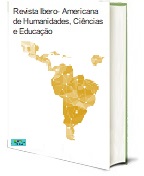CASE REPORT: COVID-19 INFECTION IN A PATIENT WITH PATAU SYNDROME
DOI:
https://doi.org/10.51891/rease.v8i5.5532Keywords:
Patau Syndrome. Trisomy 13. COVID-19.Abstract
This article sought to report a case of a patient with Patau Syndrome, which is the third most frequent trisomy among the autosomal ones, confirmed through peripheral G-band karyotype and with diagnosis confirmed through reverse transcriptase reaction followed by polymerase chain reaction (RT-PCR) for coronavirus disease (COVID-19), a disease declared as a pandemic by the WHO on March 11, 2019. This case report was carried out by reviewing the patient's medical record for the period in which was admitted to a hospital in Sergipe. In this study, we tried to observe the possibility of a worse prognosis in this group of patients due to the congenital malformations generated by the syndromic diagnosis and that can lead to organic dysfunction, thus, the cases of COVID-19 infection can present in different forms. more severe, requiring more support, which can lead to a higher lethality rate in patients with this syndromic diagnosis.
Downloads
Downloads
Published
How to Cite
Issue
Section
Categories
License
Atribuição CC BY

